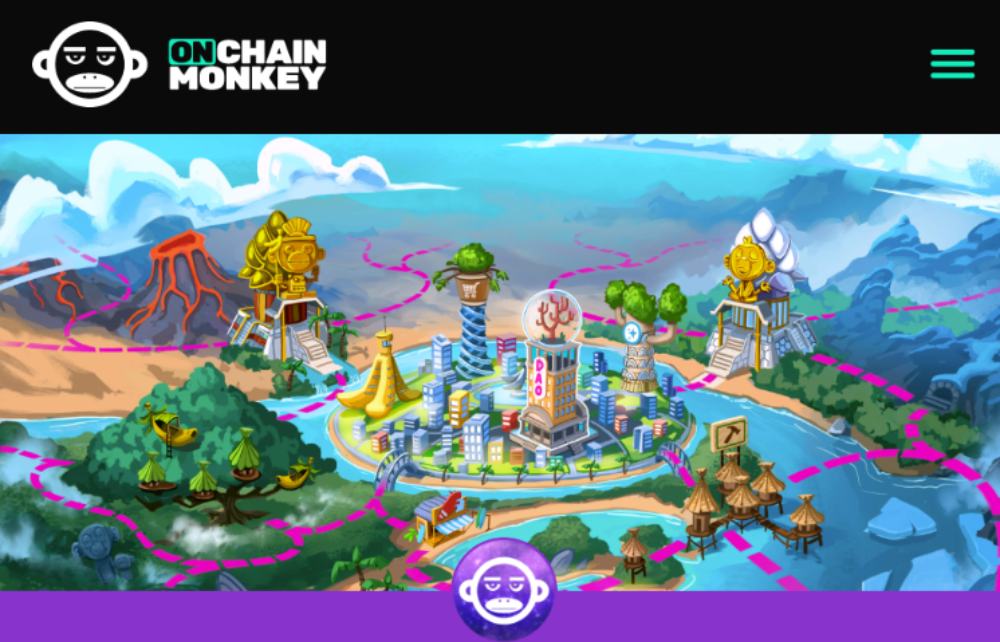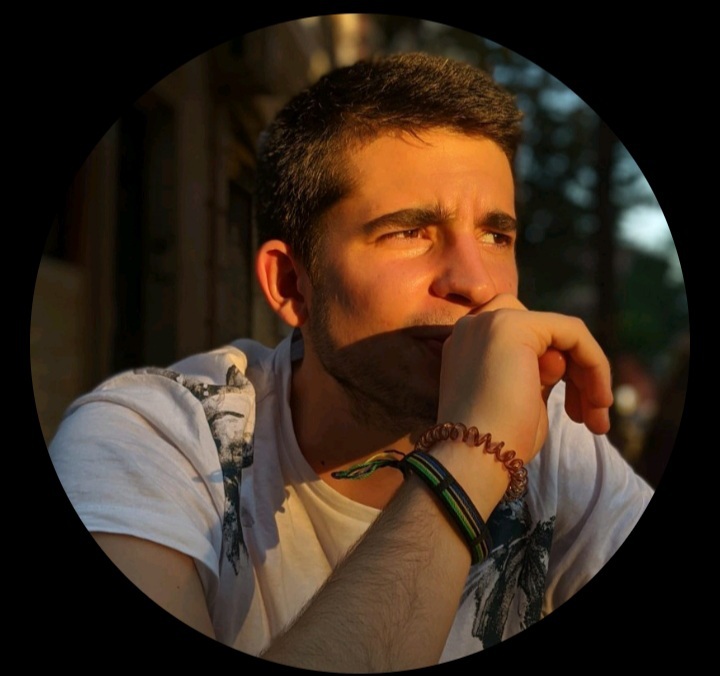Take a deep dive into the OnChainMonkey NFT, the first fully on-chain PFP collection designed and developed by some of the most prominent players in the crypto industry.
We’d be forgiven for saying that the last thing we need is another monkey-themed NFT collection. However, OnChainMonkey is too unique for me to pass on, and I’m confident that once you’re familiar with the project, you’ll be convinced it’s more than just another cheap attempt at imitating BAYC.
Every OnChainMonkey exists entirely ‘on-chain’ (we’ll get into why this matters later on), and they inhabit a rich ecosystem run by a DAO with a successful charitable element and plenty of utility.
Table of Contents
OnChainMonkey Explained
The Genesis OnChainMonkey (OCM) is a collection of 10,000 unique 2D Monkeys generated by a smart contract on the Ethereum blockchain as ERC-721 tokens. OCM was the first PFP collection to be created fully on-chain in a single, smart contract transaction.
In short, while most PFP projects are generated off-chain using generative art software and then imported onto the blockchain as JPG files, the OCM art was generated entirely through code locked in a smart contract.
The advantage of creating an NFT project fully on-chain is that all the metadata is stored on the blockchain. As a result, no third party is required to store information, and as long as the blockchain is online, the data will be available.
Karma and Dessert
The Karma collection followed the successful launch of the Genesis OCM collection. Karma Monkeys are created by feeding a Genesis monkey ‘Desserts,’ which are also on-chain NFTs.
Exactly 10,000 on-chain Desserts were minted with three different types, Incredible Ice Pop K1 (5,550), Divine Donut K2 (4,485), and Celestial Cake K3 (15).
Every Genesis monkey can eat one of each dessert and generate up to three different monkeys, with K1 being the most common and K3 the rarest.
You can learn more about both OCM collections by following the project’s official Twitter, joining their Discord, and the official OCM website.
Who Created OnChainMonkey?
The OnChainMonkey project was launched by MetaGood, an organization aiming to leverage NFTs and Web 3.0 technology to resolve some of the biggest challenges facing human society.
The team behind OCM is impressive, to say the least; they all have extensive experience in crypto and NFTs.
The following three people founded OCM:
Danny Yang, CEO
Danny holds a Ph.D. in computer science from Stanford University and founded one of Taiwan’s biggest cryptocurrency exchanges. Dany has also advised the Egyptian government on how it could leverage NFTs to solve issues surrounding land titles. Learn more about the OCM CEO on his LinkedIn.
Amanda Terry, COO
Terry is a former development executive at NBC and Twitter and the co-founder of ACTAI Ventures. She holds an MBA from the University of Pennsylvania and a BAR from Princeton University. Learn more about the OCM COO on her LinkedIn.
Bill Tai, Chairman
Bill is the chairman of ACTAI Ventures and one of the earliest backers of Zoom, Wish, Dapper Labs, and over a dozen more successful tech companies. Learn more about the OCM Chairman on his LinkedIn.
Beyond the core members, the OCM’s team has several other notable members you can find out more about on the OCM website.
When Did OnChainMonkey Launch?
The Genesis OCM collection was launched on September 11th, 2021, and the tokens were minted for free, meaning users were only required to pay the Ethereum Gas Fee.
In February 2022, the Desserts were minted as an ERC-1155 airdrop to OCM Genesis holders, and in June of the same year, the Karam collection was launched. As a result, 10,000 Karmas were created by feeding Genesis monkeys deserts, 1,000 were reserved for MetaGood, and 9,000 were minted publicly.
What Makes OnChainMonkey Unique?
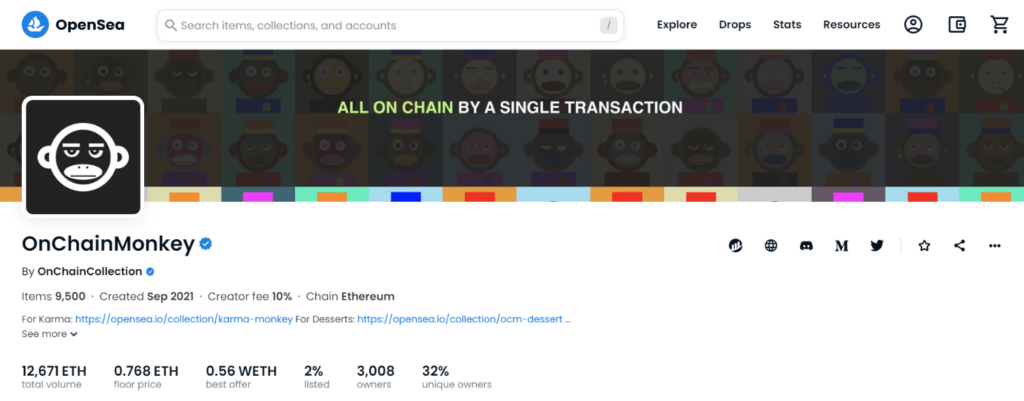
The OncChainMonkeys were one of the earliest first fully on-chain Ethereum PFP project, meaning it stood out from the crowd when the first OCMs were minted in 2021.
The main issue with on-chain NFTs is that the amount of data they can hold is considerably more limited than off-chain due to the cost of storing everything on the blockchain. However, despite the limitations, OCMs still have an extensive range of unique features you would expect from a PFP project.
Genesis monkeys have seven traits: fur, mouth, eyes, clothes, hats, earrings, and Background. As with similar on-chain PFPs like the CrypToadz, each token’s value is dictated by its traits.
According to Rarity.Tools OnChain Monkey #605 is the rarest OCM, and it has a diamond stud earring, which is found in 1% of monkeys, and Mouth #31, found in less than 0.5%. OCM #8307 is the second-rarest token in the collection, with the zombie fur trait found on just 0.36% of OCMs.
The best way to look for the rarest OCMs is to use Rarity.Tools and then follow links to LooksRare and OpenSea, where most of the monkeys are traded.
What Does OnChainMonkeyDo?
OnChainMonkeys is a multi-utility project that offers its community several ways to profit from OCMs and have a positive real-world impact.
DAO
At the heart of the OCM project is the DAO. Anyone holding an OCM is invited to participate in the democratic process within the organization.
The primary goal of the OCM DAO is to grow the ecosystem by funding partnerships with companies, art projects, and in-person and online events. In addition, treasury funds are used for marketing purposes and hiring developers.
While it’s common for a DAO to be tasked with improving the reach of an NFT project, the charitable element of the OCM DAO is significantly less common. Metagood’s objective of using NFTs to improve society is at the core of the OCM DAO, and the community routinely votes on charitable proposals that divert funds toward good causes.
The most notable success of the DAO was the role it played in funding the evacuation of Sharbat Gula, better known as the Afghan Girl, who became a symbol of Afghanistan’s troubles after she appeared on the cover of National Geographic Magazine.
Metagood worked closely with other charities and individuals to get Sharbat and her family out of Afghanistan and to Italy, where she could claim asylum. The OnChainMonkeys have been widely praised for helping Sharbat and her family to safety.
Discord
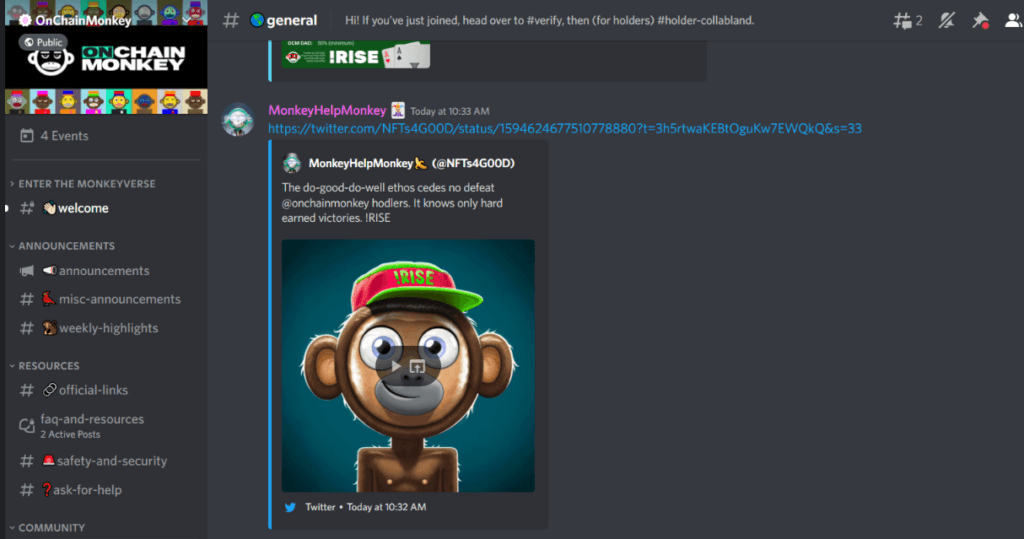
The OCM Discord channel has over 30,000 members and plays a central role in the project’s development. The Discord channel is used partly as a social place for OCM users, but it also has some more concrete features.
The Discord channel is used for advertising OCM trades to the community. There are separate channels where you can find the latest updates on Genesis, Karma, and Dessert listings/sales.
Bananas are the OCM ecosystem’s currency. However, unlike in other projects, these tokens are not on-chain tokens. Bananas are held off-chain, and an OCM user’s balance is tracked using a bot in the Discord channel.
Bananas have limited use cases, such as purchasing merchandise, but more features are in development, according to the OCM team.
DAO proposals are posted on Discord, where users debate how to spend treasury funds.
Missions
Missions are tasks given to OCM users; they range from participating in DAO proposals to getting involved in real-life conservation efforts. Every time you complete a mission, your monkey’s level increases, and you receive a reward crate.
The reward crates are generally full of NFT puzzle parts that can eventually be combined to form an entire NFT. Still, occasionally very lucky users will win a Karma OCM potentially worth several ETH.
Merchandise
Merchandise such as OCM sweaters, caps, shirts, and socks can be purchased through the OCM website; however, only Genesis OCM holders can make purchases.
OCM Royalties
Genesis and Karma OCMs have 10% royalty fees, this percentage is higher than usual, but 50% of the funds are used to fund the DAO.
How To Buy OnChainMonkey?
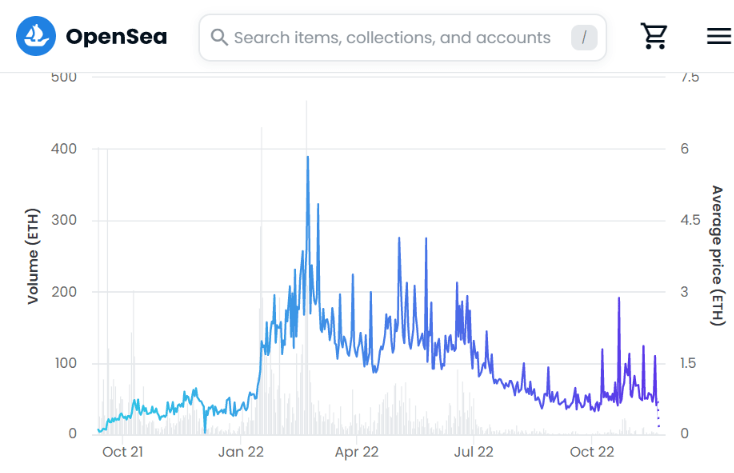
The best place to purchase OnChainMonkey is on OpenSea, where around 2% of the Monkeys are listed as of writing with a floor price of ETH 0.79 and a total volume of ETH 12,672.
As we’ve already covered, OnChainMonkey is a community-driven project that uses Discord and the DAO to make decisions, so we suggest you spend some time on the various OCM social media channels before deciding to invest.
Follow these steps to buy an OnChainMonkey:
- Get a Crypto Wallet: Set up a Metamask or Coinbase wallet and load it with Ethereum (ETH).
- Connect to OpenSea: Visit the OnChainMonkey OpenSea page and click the wallet icon at the top to link your wallet to the website.
- Explore: Browse the OCM collection. You can use the filters to alter the price and rarity.
- Buy: Purchase an OCM by pressing Buy Now or submitting a Bid.
This process applies to buying a Genesis OCM, a Karama OCM, or Dessert.
The Future Of OnChainMonkey
The OnChainMonkey project established itself as the first fully on-chain PFP project. While this in itself would have been enough for the monkeys to make a name for themselves, the developers had bigger plans. The OCM grew into a community-led project with a solid charitable element that even hit global headlines when it helped save the Afghan Girl.
Despite the project’s success, the bear market has beaten its average price down, and this trend is likely to continue in the short and medium term. The DAO will determine the future of OCM. If users remain loyal to the project and continue to expand the project’s utility, then OCM could be one of the big winners when the bull market returns.

